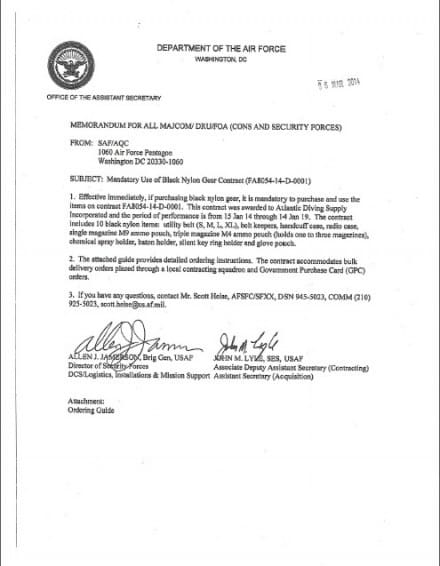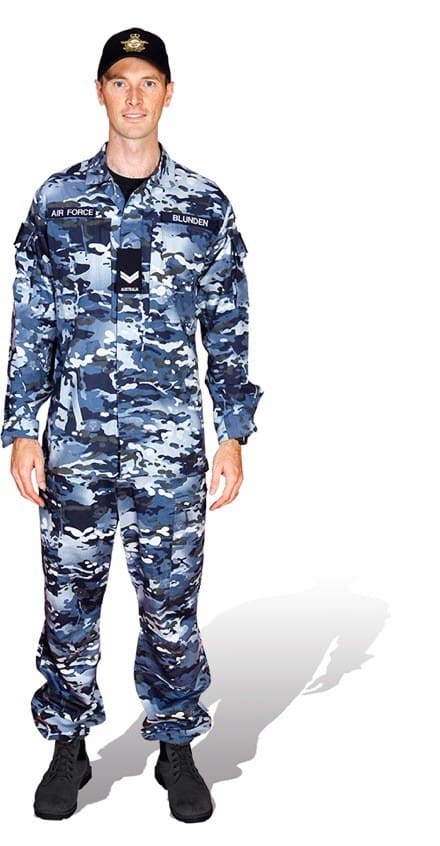
(Click to view .pdf)
Late last week, the US Air Force issued an update to AFI 36-2903, “Dress and Appearance of Air Force Personnel.” While there are numerous changes, I am happy to see a few. To be honest, most of these changes were happening anyway. It just made them OK.
– Morale T-shirts are back! Like they ever went away. Squadron color T-shirts may once again be worn with the ABU or flight suit when in-garrison or on-station during unit temporary duty assignments and contingency deployments. Shirts must be one color throughout the squadron, and may have only a small squadron patch up to 5″ in diameter over the left chest. But, only on Fridays.
– Morale Patches are back! if you’re wearing a bag anyway. And, only on Fridays. Remember those pithy little tabs everyone had made that went on the pen pocket Velcro when you cut off the flap? Those are back too. But only on, you guessed it, Fridays.
– Sister Service Qualification Badges are back! Looking at the AFI, it appears that it’s now game on. Not only are sister service aeronautical badges authorized but also the Army badges previously authorized with the BDU such as Air Assault and Pathfinder. Based on what I saw in the AFI it also looks like badges such as USN warfare pins are now also authorized for wear on the ABU and service dress a similar fashion to a Group 4 badge in the US Army. Additionally, tabs like ‘Ranger’ and ‘Special Forces’ are also once again authorized for wear. However, for some odd reason, the US Army ‘Airborne’ tab is in the AFI and it has never been an individual award but rather a part of a unit’s Shoulder Sleeve Insignia. Although, admittedly, back in the day I saw Airmen assigned to joint units like JCSE wear it stand alone on their sleeve.
– Unmanned Aerial System / Sensor Operator Badges? Yep, they join Cyber Operations and have their own badges now so they can be held in contempt by the other ‘Operators.’
– No More Color Restrictions for Running Shoes! Pretty self explanatory.
– No More Reflective Belts! That is unless your CC is a spineless, risk averse toad. Then, you’re screwed. It’s up to the local commander now.
– No More Wire Hangers! I just threw that one in for fun. It’s only a rule if you’re named Christina Crawford.
– You Can Wear Black Socks for PT Not sure why you’d want to, but you can.
– Maintainers Must Wear Green Boots Black boots are out, sorry guys.
– Cell Phones No Longer Have to be Black This is the one change to AFI 36-2903 that will have the biggest impact. Everybody is carrying a cell phone and most everyone has been out of regs for the past few years because somebody wanted everyone to have the same color of phone. The only guys with Black phones were the ones with taps on their low quarters. So, now that’s fixed and no more Letters of Counseling for that hot pink phone. Just don’t attach it to your uniform or purse and you’ll be ok.
Now, if the Army could just itself together and release the update to AR 670-1.





















































































































